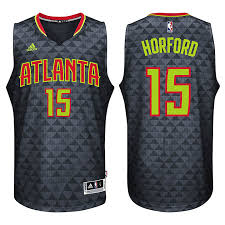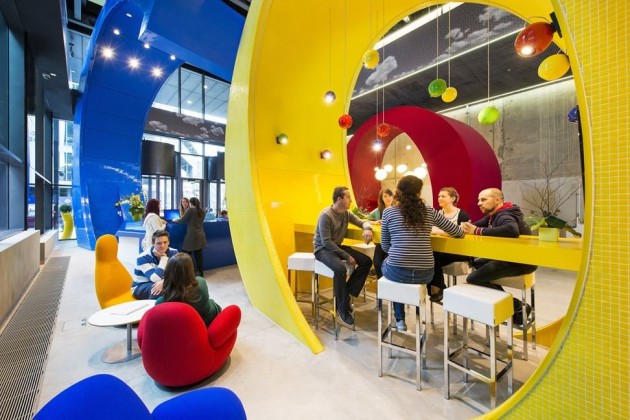Best of 2015: Wearable tech at work: Three lessons from the NBA
NOTE: As 2015 winds down, so will 'regular' posts on the blog. For the next two weeks, I will be posting what I thought were the most interesting pieces I published in 2015. These were not necessarily the most popular or most shared, just the ones I think were most representative of the year in HR, HR Tech, workplaces, and basketball. Hope you enjoy looking back on the year and as always, thanks for reading in 2015.
Next up a piece from October titled Wearable tech at work: Three lessons from the NBA, that was my favorite kind of post to write - taking an example from the sports world and thinking about what it means for the mainstream kinds of workplaces most of us inhabit.
Wearable tech at work: Three lessons from the NBA
The NBA season starts tomorrow!
It could not have come soon enough for this NBA junkie. While my beloved Mets have made things interesting with a surprising run to baseball's World Series, I live and breathe for NBA basketball. This is for two reasons primarily. One, the NBA is simply the best, most exciting, most watchable sport there is. And two, basketball provides a tremendous source of insights for all things HR and the workplace - leadership, recruiting, talent management, assessment, compensation, and increasingly - the use of advanced performance analytics for evaluation, talent management, and strategy development.
Case in point, the increased use of player movement and performance tracking technology to better understand patterns, tendencies, and importantly, fatigue and diminished output/effort in a player. Check this excerpt from a recent piece on the topic from Grantland, From BMI to TMI: The NBA Is Leaning Toward Wearable Tech, then some comments from me after the quote:
The NBA is putting its own money into the study of wearable GPS devices, with the likely end goal of outfitting players during games, according to several league sources. The league is funding a study, at the Mayo Clinic in Minnesota, of products from two leading device-makers: Catapult and STATSports.
The league declined comment on the study. Most teams already use the gadgets during practices, and Catapult alone expects to have about 20 NBA team clients by the start of the 2015-16 season. The Fort Wayne Mad Ants wore Catapult monitors during D-League games last season in an obvious trial run for potential use at the parent league.
Weighing less than an ounce, these devices are worn underneath a player’s jersey. They track basic movement data, including distance traveled and running speed, but the real value comes from the health- and fatigue-related information they spit out. The monitors track the power behind a player’s accelerations and decelerations (i.e., cuts), the force-based impact of jumping and landing, and other data points. Team sports science experts scour the data for any indication a player might be on the verge of injury — or already suffering from one that hasn’t manifested itself in any obvious way.
The piece goes on to make some interesting points about how teams can use the devices in a practice setting in order to make decisions about player rest and practice strategy. But since the NBA player's are represented by a union, in-game use of these devices will have to be collectively bargained according to the piece. What can we extrapolate to 'normal' workplaces from the NBA's experiments and experiences with these kinds of wearables?
I can think of three main things:
1. Union shop or not, organizations are going to have to take data privacy, usage, and access issues very seriously and head-on. Players that are angling to secure their next contract might not want widespread access to their performance data if it begins to show some performance degradation that might not be apparent to the naked eye. If you want any employee to wear a tracking tool like this, you have got to ensure the 'right' level of privacy and control for your situation.
2. Your primary use case for wearable tech should be a positive one. And probably your secondary use case as well. If wearables are going to be used to prevent injuries, help workers find efficiencies, or better align tasks to workers, (and even to a specific day or time), then it is likely you will have a better chance at employee adoption of this kind of tech. If employees think your primary goal of these devices is to identify the 'weak links' in the organization in order to apply discipline, (or to weed them out), then the reaction is going to be less-than-enthusiastic. There is already a pretty large 'Big Brother is watching' inherent bias you need to overcome, don't make it worse by treating wearable tech at work like some kind of house arrest ankle bracelet.
3. Wearable data has to be interpreted in context. Every basketball game is unique. The opponent, the combinations of players on the court, the external conditions, (travel, amount of sleep, diet, etc,), all vary from day-to-day and game-to-game no matter how hard coaches try to have things consistent. Careful analysis of player tracking data and performance has to include and attempt to understand how external factors impact performance. Player tracking data is going to create tremendous amounts of data for team management to analyze - on top of the pretty large data sets they already have been crunching. And when this kind of data is available to every team, the competitive advantage ceases to be simply having the data - the advantage shifts to the organization that is the best and extracting insight from the data.
I am sure there will be more to unpack as player movement and tracking data becomes more of a mainstream form of analysis, but for now, these are the big takeaways for me.
I love the NBA. You should too. Everything you need to know about HR an Talent can be learned in 48 minutes a night.
Trust me... it will be a great season!
NOTE: This was the last of the 'Best of 2015' posts. Hope you enjoyed looking back on the year. HAppy New Year to everyone and we will see you back with fresh content next week.

 Steve
Steve




